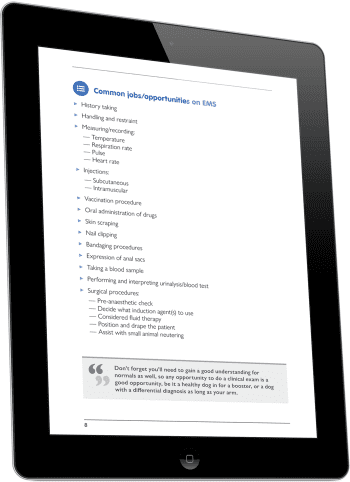I’ve been pondering over a blog on the current situation of the EMS and training practice (TP) schemes for a while and thought I should search for anything I may have written as I pondered.
Well, shock of all shocks, I’ve not just made notes, I’d already written and published a full blog on this topic way back in 2014. I’ll post the link here as its all still relevant – we have more vet schools and more students, and any lack of EMS placements is not stopping anyone.
So… what can I add four years later?
The vet nursing TP system carries on the same, with a small but steady increase on TP numbers (do check the previous blog for a handy glossary). This is great news, but the system is still very different to EMS, although both are trying to achieve clinically competent veterinary employees. So, is it time to try to integrate some similarities between the systems and help boost an understanding of each other’s roles?
With Emma Goodman Milne’s comments as keynote speaker at BVNA Congress suggesting vet students should spend a month working as a vet nurse to fully understand the role, is there, perhaps, already a way to do this?
Could there be a part of these systems that have some complimentary sections be a move towards a more synergistic education programme for vets and vet nurses? There is much discussion at the moment about inter-professional education and this is being implemented in classroom learning, but does a space exist that shows the similarities between vet nurse and vet education during EMS/TP?
EMS/SIII – crossover
 Getting the most out of each EMS placement is an important part of vet student learning and a Clinical EMS guide, produced by the Association of Veterinary Students, includes some great advice. It shows there is a key area of training that demonstrates the crossover in vet and vet nurse skills.
Getting the most out of each EMS placement is an important part of vet student learning and a Clinical EMS guide, produced by the Association of Veterinary Students, includes some great advice. It shows there is a key area of training that demonstrates the crossover in vet and vet nurse skills.
The small animal EMS list of skills (common jobs/opportunities on EMS, page 8) is very similar to the SIII skills a first opinion RVN could have delegated to them from a vet, and these are often skills RVNs support student vets with.
Vets acknowledge this support, with many saying supportive nurses really made a difference in their career – and, while this is great to hear, is it time for a formalisation of the VN role in training vets in EMS?
Could there be similar modules shared by the EMS and TP schemes, so they could be stand-alone and accessed not just by students and clinical coaches, but other nurses (and staff) supporting vet students?
Information sharing
Supporting EMS (and new grad students) and student VNs adds to the VN’s workload, and is a big responsibility, so is it time to formalise the support given in the EMS scheme and acknowledge it not just on an individual or practice level, but across the industry? Could we then make progress in making the VN role more visible as part of the vet team?
Where vet nurses have been part of the TP system, they have great experience and understanding of coaching and how to approach assessing cases appropriate for students. Yet, the “cost” of vet nurse training is often seen as a negative and a reason for vet practices being unwilling to enter the TP scheme – which is sad as the benefits of having staff trained to support learning at work far outweigh the costs.
For the future, could we consider sharing information that will help with getting to know the full boundaries of delegating SIII to nurses using this EMS guide? We can improve the understanding of the vet nurses role, and improve EMS for vet students and future working relationships, too.

Leave a Reply